Kaitha Shiv Mandir, located in Ramgarh, Jharkhand, is a historic temple known for its unique Mughal and Bengali-style architecture. Built in 1670 by Raja Dalel Singh, the temple features a 12-feet-high Shiva Lingam adorned with a five-hooded serpent canopy.
The site is believed to possess divine healing powers, especially for ear ailments. Devotees gather here in large numbers during the annual Kanwar Yatra and Maha Shivratri celebrations. Surrounded by natural beauty, the temple is easily accessible by road, rail, and air.
Efforts are being made to preserve this ancient heritage, making it a significant spiritual and historical landmark.
Introduction to Kaitha Shiva Temple
Shiva temple is located in Kaitha village of Ramgarh block of Ramgarh district of Jharkhand state. This temple is located at a distance of 100 steps from the Ramgarh main road of Bokaro. This temple is a wonderful example of Mughal-Hindu architecture.
The main Shivlinga worshipped in the temple is placed at a height of more than 12 feet and can be reached by stairs. The Shivlinga in the temple is located at such a height that it can be reached through two stairs.
The main Shivlinga has a five-hooded snake umbrella. There are tridents and idols of Hanuman ji in the temple complex. There is also a cave in the temple complex which goes to the nearest pond.
History of Kaitha Shiva Temple
Kaitha Shiva temple has been given the status of National Heritage in 2006-07. Shiva temple was built by Raja Dalel Singh in 1670 AD, who built this temple in order to make Padma Raja Ramgarh capital.
The architecture used in the construction of this temple was Bengal style and Mughal style. A glimpse of those things can still be seen in this temple. This temple has been built on two floors. The only way to climb up and down is through the stairs.
Here two Shivlings are worshipped together. It is said that in ancient times the worshippers of this place used to come here through a tunnel and after worshipping they used to go back through the same tunnel.

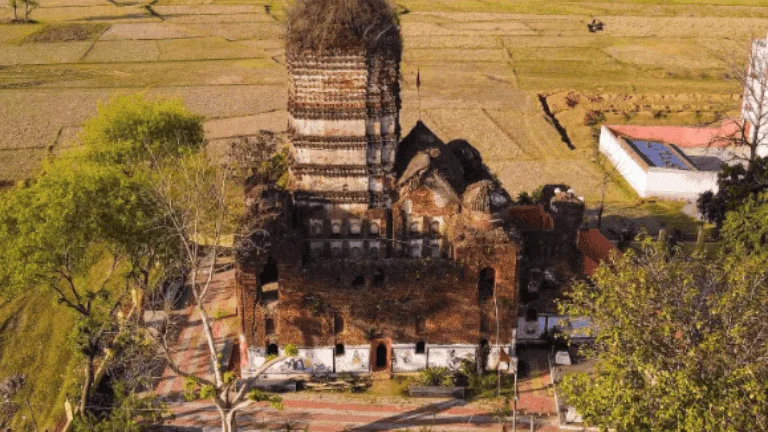
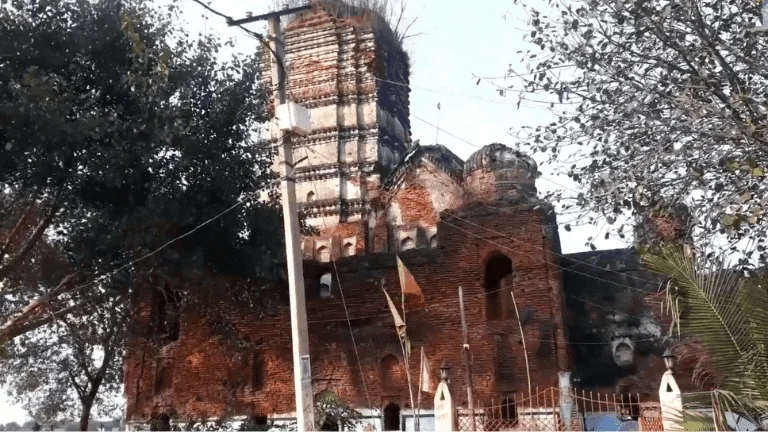
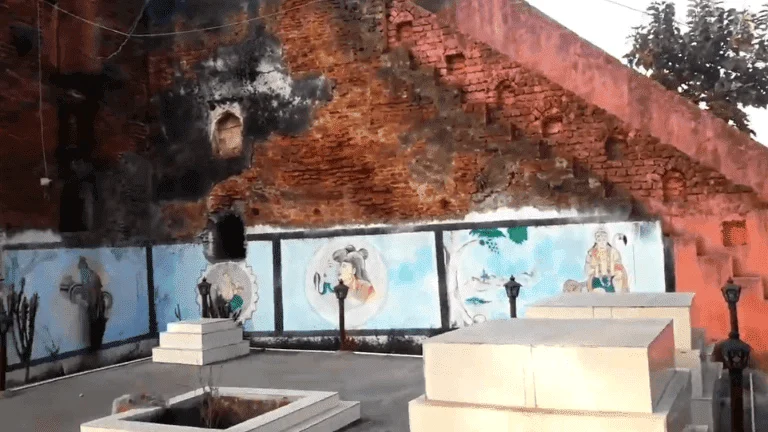
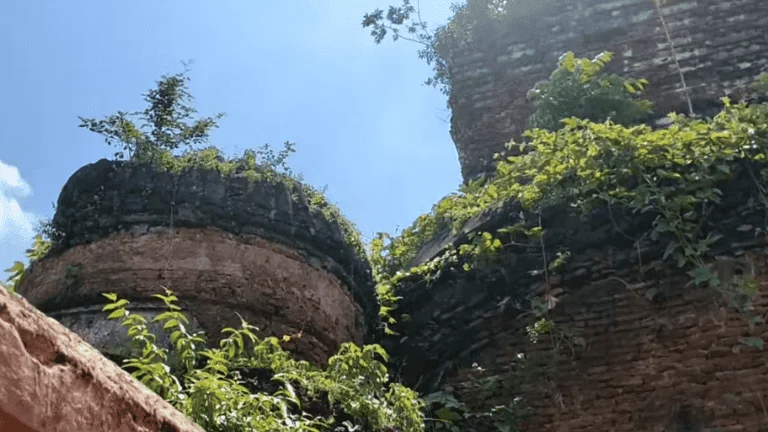
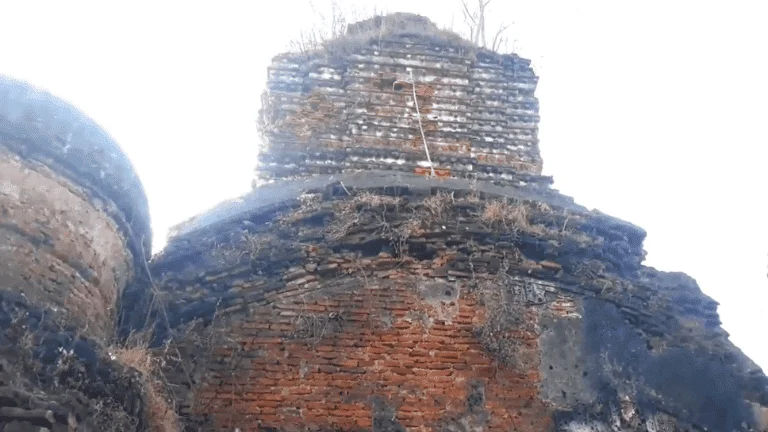
Religious significance and devotion to Shiva
The speciality of the beliefs and miracles associated with the temple is that when the priest here asked, he told that the most important specialty of this temple is that the pain of all the devotees coming here is relieved.
He says that even ear patients get cured automatically. Like pus coming out of someone’s ear, ear pain, water flowing from the ear, etc., all this gets cured by putting a few drops of Shiva Baba’s water in the ear.
Religious rituals and worships
The Shravani Monday fair is organized here. Devotees offer water to Lord Shiva by doing Kanwar Yatra. Apart from this, a program of Bhajan Kirtan is organized along with a grand Jagran on Shivratri.
Food Bhandara, Prasad distribution is done. Fair is also organized. There is always a crowd of devotees here.
After the construction of Shiva temple in Kaitha, he also wrote a book on Shiva Mahima in manuscript. This Shiva temple is also mentioned in it. It is said that due to many reasons, Daler Singh’s book could not be published, but the book is still safe in a museum in Banaras.
For development
This temple is being beautified by the city administration and the district administration. This temple is also being repaired from time to time. The administration here contributes a lot in the construction of many trees and roads etc.
For development, the priest has demanded from the government that this temple and ancient heritage should be saved from destruction and it should be repaired in time. Its beauty should be enhanced again by cutting the trees etc. growing on the walls of the temple.
Architecture and structure of the temple
It is said that this temple, built in the decade of 1670-71, has a wonderful architectural art. The cylindrical dome of this two-storeyed temple and the use of Lakhouri bricks of that period and the construction of the temple is a wonderful art in itself.
Even after a crack appeared in the wall of one corner of the back side of the temple from bottom to top, the temple is still safe. From this, its strength can be easily guessed.
By looking closely at the structure of the temple, it seems that there was a Shiva temple in the upper part of the temple and a cave-like military post below. The king’s soldiers deployed around the small window-like wall left around the lower part of the temple used to be stationed with bows and arrows and other weapons.
A tunnel was built for about three kilometers from the lower part of the Kaitha temple to the banks of the Rajagarh Damodar river. Through this tunnel, the Ramgarh king and his family used to come and go to the temple for worship.

Mythological stories related to Kaitha Shiv Mandir about Surambh
The priest says that the Surambh has been closed today. It is a matter of great fun that whatever we are saying is all hearsay. In the olden days, the kings and queens used to live in Garh Qila. Rakjhad Dam is in Ramgarh, on the banks of Damogar river.
The kings and queens used to come from there. They used to bathe here and in the pond and then come to Surambh and worship Lord Shiva in the temple. It is said that the kings and queens did not look at the face of any person without worshipping. This was the reason why a Surambh was built from the temple to Garh Qila.
Pujari
The main priest here says that he has been doing puja at this temple since 1994. In the early days, very few people used to come to this temple to do puja. Today, this temple is turning into a broken and dilapidated fort. If it is not protected, it may be completely destroyed in the coming time.
Geographical location and natural beauty of the temple
It is located on NH-23 Kaitha Road at a distance of about 3 km from Ramgarh. It was declared a national heritage by the central government in 2015. It is said that Daler Singh of the Ramgarh royal family built this cave-like temple. Daler Singh of the Ramgarh royal family was a great devotee of Lord Shiva.
Daler Singh also had a fort in Ramgarh, which is now known as Rajagarh. Daler Singh, who was always immersed in the devotion of Lord Shiva, built this cave-like Shiva temple in Kaitha.
The temple is collapsing day by day and is sinking into the ground. This temple is located at a distance of about 40 km from Ranchi. This temple is built in Kaith village, where the environment is clean.
How to reach Kaitha Shiv Temple?
Ramgarh district borders with: North and West: Hazaribagh District, North and East: Bokaro District, East: Purulia District (West Bengal), South: Ranchi District. It is easily accessible by road, rail and air. The nearest airport is Birsa Munda Airport (45 km (28 mi)) in Ranchi. There are 5 to 6 direct trains from Ranchi to Ramgarh by rail.
- RNC BSB EXP (18611)
- Rakhnd SJ EXP (12873)
- Rau Muri Jat Exp (18109)
- BSB RNC EXP (18612)
- SBP BSB EXP (18311)
- Local transport like bus, tempo, car etc. are available to the temple.
Accommodation and food facilities near the temple.
There is a facility for devotees to stay in the premises of Kaitha Shiv Mandir, but for tourists, there are many hotels in Ramgarh city for overnight stay. Where all the food and drink facilities are available. Apart from this, there are many shops on the roadside where one can have breakfast or food.
Temple administration and maintenance
The priest here has been taking care of Kaitha Shiv Mandir since 1994. The administration has helped a lot in the maintenance of this temple. Many works have been done for the development of this temple and the government has beautified this temple under many schemes.
More tourists come to see this temple than devotees. The donation amount offered in this temple is used in the development work of the temple. And many festivals are celebrated throughout the year. In which the maximum crowd of devotees from nearby areas is seen.
Other religious places in the temple complex
Lord Hanuman temple is located in the premises of this ancient temple, which has been built only a few years ago. That is why this temple is safe. Daily worship is done in this temple. Also, Mata Parvati temple and the statue of Nandi Maharaj have been completely destroyed. Two Shivlingas are worshipped inside the temple here.
Suggestion for tourists and devotees
The Kaitha Shiv Temple is very old and has developed cracks on the bricks and walls. While entering the temple, visit the temple keeping your safety in mind. Avoid entering the tunnel here. Avoid causing any kind of damage to the temple. This is because it has been declared a national heritage.
Due to which, legal action can be taken against you if you cause any kind of damage. If you are a resident of North and West: Hazaribagh District, North and East: Bokaro District, East: Purulia District (West Bengal), South: Ranchi District, then you can come to visit here.
Read This
- Sote Dam Beautiful Place of Ramgarh District, Jharkhand
- Rarha Waterfall is a Beautiful Mini Fall, Ramgarh, Jharkhand
- Masmohana Ghati Hill a Beautiful Place, Ramgarh, Jharkhand
FAQ’s
1. Where is Kaitha Shiv Mandir located?
Kaitha Shiv Mandir is situated in Kaitha village, Ramgarh district, Jharkhand, approximately 100 steps from the main Bokaro-Ramgarh road.
2. What is the historical significance of Kaitha Shiv Mandir?
The temple was built in 1670 AD by King Dalel Singh while establishing Ramgarh as his capital. It showcases a blend of Mughal and Bengali architectural styles and was declared a national heritage site in 2006-07.
3. What makes the Shivling at Kaitha Shiv Mandir unique?
The temple’s main Shivling is placed over 12 feet high and can be accessed via stairs. It is adorned with a five-hooded serpent canopy, making it distinct from other temples.
4. Are there any religious beliefs or miracles associated with the temple?
Devotees believe that offering water from the temple to one’s ears can cure ear-related ailments like pain, discharge, and infections. The temple is also considered a place where devotees’ hardships are relieved.
5. How can one reach Kaitha Shiv Mandir?
The temple is accessible via road, rail, and air. The nearest airport is Birsa Munda Airport in Ranchi (about 45 km away). Several trains connect Ranchi to Ramgarh, and local transport options like buses and taxis are available.
6. What facilities are available for visitors near the temple?
While there are basic lodging facilities for devotees within the temple premises, tourists can find better accommodation options in Ramgarh city. Nearby food stalls offer snacks and meals for visitors.
